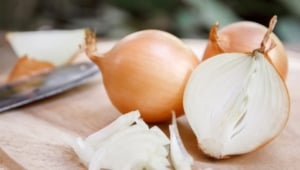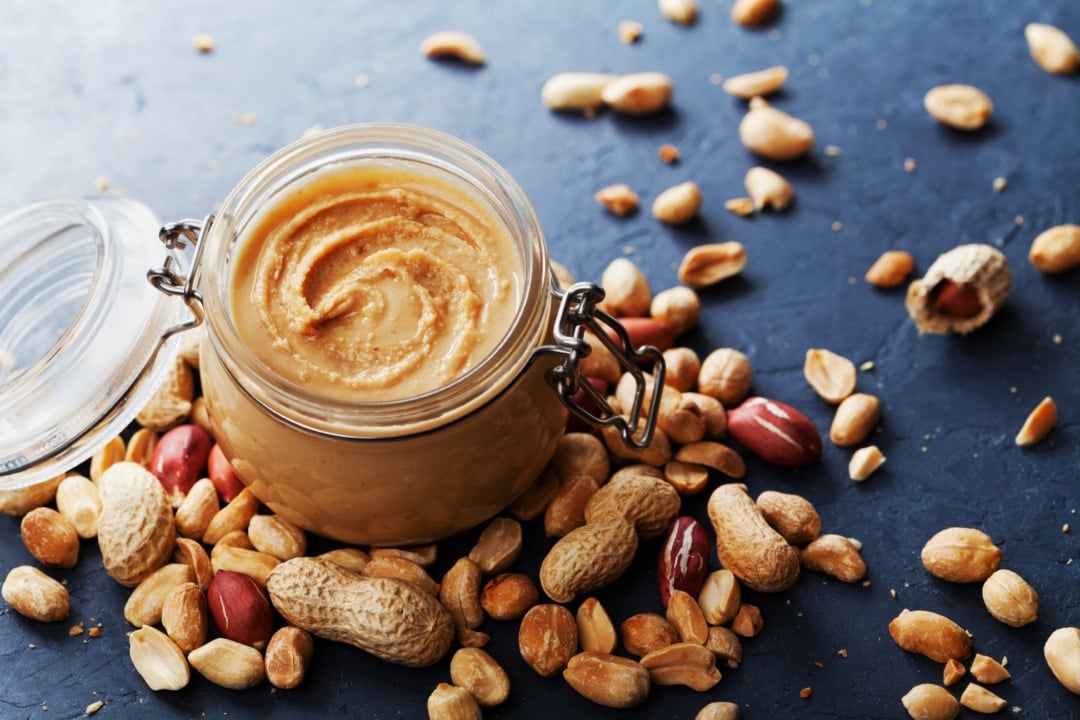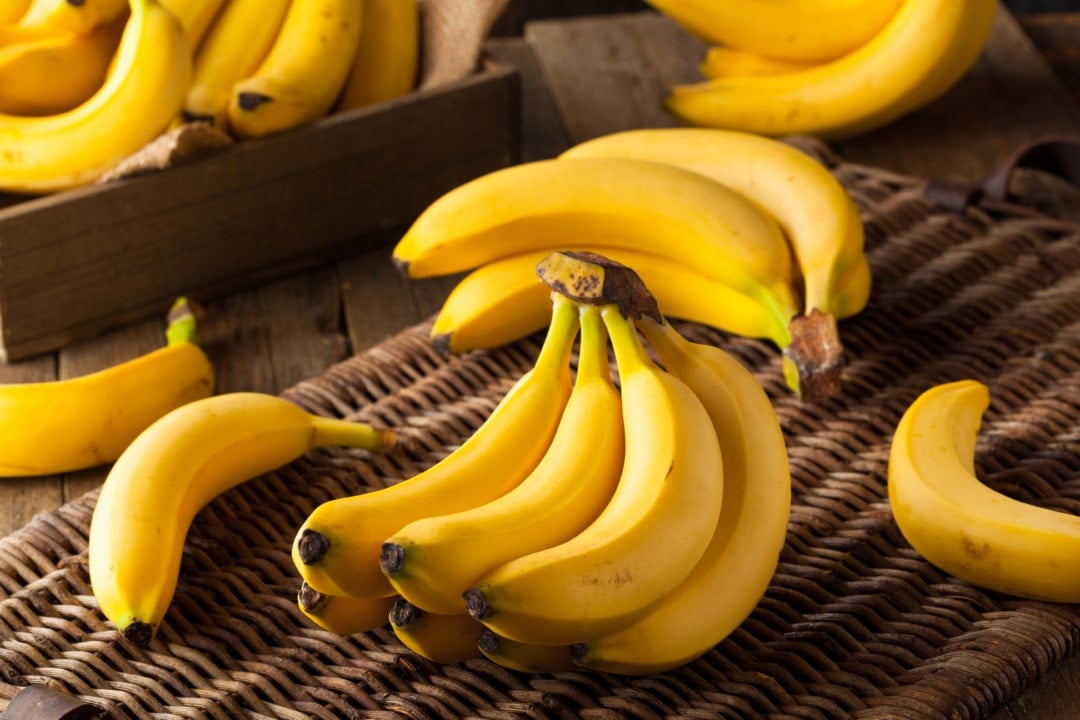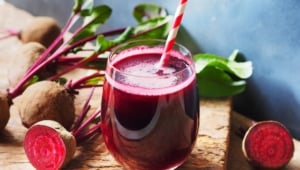8 Health Benefits of the Onion & 4 Tips for Use

For many, onions are an indispensable ingredient in many dishes, but they’re also so much more than just your everyday vegetable, as the numerous facts about the root vegetable go to show. Read on to find out about all the health benefits and learn some tips on how to use onions in the kitchen.
Onions are considered a popular home remedy for ailments such as coughs and can also be used to soothe mosquito bites in summer or earaches in autumn.
Interesting Facts about Onions

Interesting Facts about Onions
What do you know about onions? Perhaps one of the only things you can think of is that they make for a tasty ingredient in many a dish, but we’re here to show you that onions are much more than just root vegetables that don’t like being peeled.
Did you know, for example, that the onion is one of the oldest foods in the world?
The Origin of the Onion
There are different varieties of onions and researchers assume that the original "wild onion" actually no longer exists. So where does the onion that we find in supermarkets today come from?
The onion was discovered by the inhabitants of Asia more than 5,000 years ago. Thanks to its special flavor, it quickly became popular all over the globe. For example, the Egyptians were fed with onions during the construction of the pyramids.
It was transported from its countries of origin to western Asia many thousands of years ago, and cultivation only expanded to Europe in the Middle Ages. In the Age of Discovery, onions were brought to North America by the first European settlers.
Different Types of Onions

Onion Types: Red Onion
There are more varieties of onions than just the familiar yellow onion you know from the vegetable section of the supermarket. Onions come in a wide array of shapes, colors, and sizes.
Here they are at a glance: yellow onion, red onion, white onion, Spanish onion, shallot, silverskin onion, and sunion onion. Now we’ll go into more detail.
Yellow Onion
It is the most widespread type of onion around the globe. The yellow, or common, onion has a variety of uses in the kitchen and can be baked, grilled or fried. What’s more, it also tastes delicious raw, in a fresh salad for example.
The onion is white inside, has brownish skin and tastes tangy and slightly sharp.
Red Onion
The red onion makes for a colorful change from the yellow onion and has purple insides which are encased in a fine red skin.
In the kitchen, red onions are great fried or caramelized in olive oil and can be used for salads or in vegetable stir-fries. In terms of taste, the red onion isn’t much different from the yellow onion.
White Onion

White Onion
The white onion is easily digested both raw and cooked. This may be due to the fact that it is less sharp and so slightly milder in flavor. This onion is particularly popular in Southern Europe.
Spanish Onion
The Spanish onion mainly differs from the yellow onion in terms of size because unlike its little sister, the Spanish onion can grow up to a size of 20 centimeters.
Inside, the Spanish onion looks exactly like the yellow onion, but is juicier and a little milder in flavor. In the kitchen, this onion is popular in stews or stuffing.
Shallot
Shallots stand out thanks to their elongated shape and were, therefore, not initially considered an onion, but have since also been adopted as part of the Liliaceae family. The taste of shallots can vary, which makes them a special ingredient in your recipes.
Silverskin Onion

Silver Onion
In addition to the white and red onion, there is also another colored onion: the silverskin onion, and you can find this kind in the canned goods section of the supermarket, rather than the fresh vegetable section. This is because they are usually sold pickled. In some vegetable stores, you can also find them fresh.
The silverskin onion is small and has a mild tangy flavor. They make for a delicious side dish when fried and you can also eat them straight from the jar if you buy them pickled.
Sunion Onion
Sunions are a very new type of onion and were only bred recently. It took about 30 years of breeding to produce the Sunion onion as desired.
It was bred for one main reason: the search was on for an onion that would not produce irritating compounds when cut. In other words, an onion that won’t make you cry. Sunion onions are also characterized by their mildly tangy, sweet taste.
The Structure of Onions

Onion Layers
The structure of the onion is more interesting than almost any other vegetable. This is because the vegetable consists of several thickened, fleshy sheets which lie on top of each other in dense layers.
The inner layers protect the onion’s nutrients and also store water. The thin outer layers grow to protect the onion from external influences.
The stem is in the center of the onion. This is compressed, forms the basis for the base of the onion and has small white roots growing out of it.
The onion belongs to the Liliaceae family and it is a perennial plant.
Onions: Nutrition Facts and Calories

Nutrition Facts and Calories
Even though onions may look like boring vegetables, they have a lot of benefits for your health. This is mainly due to the valuable vitamins and minerals they contain, such as vitamin C.
Onions mainly contain:
- Vitamin C: strengthens skin and hair
- Antioxidants: protect against bacterial infections
- B vitamins: support nerves, the immune system, and the metabolism
- Potassium: balances the acid-base balance
- Sulfur compounds: promote the functionality of muscles and bones
We’ve put together an overview of what an onion contains and the nutritional values so you have it all available to you at a glance. This refers to 100 grams' worth of onions, which contains just 40 calories.
| Components | Onion, raw (100 grams) |
|---|---|
| Calories | 40 kcal |
| Total Fat | 0.1 g |
| Total Carbohydrate | 9.3 g |
| Dietary Fiber | 1.7 g |
| Sugar | 4.2 g |
| Protein | 1.1 g |
| Minerals | |
| Chlorid | 19 mg |
| Iron | 0.2 mg |
| Potassium | 162 mg |
| Calcium | 22 mg |
| Magnesium | 10 mg |
| Manganese | 100 µg |
| Sodium | 2.7 mg |
| Phosphorus | 33 mg |
| Zinc | 0.2 mg |
| Vitamins | |
| Vitamin B1 | 40 µg |
| Vitamin B2 | 20 µg |
| Vitamin B6 | 0.16 mg |
| Vitamin C | 7 mg |
| Vitamin E | 70 µg |
These substances promote various organ and metabolic processes in the body, contribute to a healthier well-being and can also prevent or have a positive impact on diseases.
Health Benefits of Onions

Health Benefits of Onions
Onions can alleviate various diseases thanks to the healthy substances they contain. These include high blood pressure, diabetes, and osteoporosis.
Even cancer cells can be fought off with the vegetable, according to research. This is mainly due to the combination of vitamin C and antioxidants.
Read on to find out how and in which different ways eating onions can benefit your health.
Benefits of Onions for Men
There are studies that claim that eating onions can benefit a man’s sexual health.
They indicate that the phytochemicals in onions, and especially the high content of vitamin C, can counteract erectile dysfunction and raise testosterone levels. The juice of onions is said to have a direct effect on the endocrine glands that produce hormones to increase sexual stamina.
How an Onion Benefits in Earache

Onion Benefits in Earache
Onions can strengthen the body from the inside and outside. By placing cooked onions on the skin, wounds, and pain can heal or subside better. To do this, onions are cooked, wrapped in a kitchen towel, and placed on the affected area.
For earaches, onions can work wonders. For this, you can put the warm onion bag on the ears. It has anti-inflammatory, antibacterial, and analgesic effects. Onions also have an effect on swellings and make them go down.
Chop two large onions and steam them until soft. Then put them in a kitchen towel (preferably cotton or linen). Tie it well and place the sachet on the ear.
How an Onion Benefits Your Skin

Benefits of Onions for Your Skin
Onions are full of important vitamins that make for glowing and healthy skin. Here we are talking especially about vitamins A, C, and K.
These help you get rid of pigmentation spots and also protect you from harmful UV rays. For supple and acne-free skin, you can even mix a little onion juice into your face mask and apply it.
Health Benefits of Onions for Coughs
Cough is not a pleasant thing. However, the onion can also help here as a home remedy. For this, the juice from the boiled onions is drunk. This is to relieve the cough irritation. In addition, onion juice can relieve possible pain in the throat area and fight inflammation.
Benefits of Onions for the Digestive System

Onions Benefit Your Digestive System
Are you experiencing abdominal pain or flatulence? Put a warm onion bag on your abdominal area and relax on the sofa. In addition, eating raw or cooked onions will help. Depending on the digestibility, you should always start with small amounts and check how your stomach reacts.
Onions contain so-called "fructans". These are carbohydrates. They are healthy for the intestinal flora and can stimulate bowel movements.
However, those with a sensitive digestive system should be careful. Because the fructans in this case can lead to further bloating or stomach pain instead of eliminating it. Alternatives to onions for stomach pain and bloating are:
- Fennel tea
- Cumin tea
- Ingwertee
- Apple cider vinegar in a glass of water
An Onion Benefits the Healing after Insect Stings

Onions Benefit the Healing after Insect Stings
For many centuries, bites from bees, wasps, or mosquitoes have been treated with the healing power of raw onion. There is hardly a faster and more practical remedy than the onion for an insect bite: the onion is cut open and placed directly on the wound.
Onions can also support the healing process for minor burns or wounds of the skin, warts, or bruises. Warts and boils can disappear completely with the help of this natural medicine and heal faster.
Health Benefits of Onion for Toothache
Toothache is not pleasant. Anyone who has ever suffered from a toothache knows the unpleasant feeling. So you don’t have to endure the pain until your doctor’s appointment, you can use onion to relieve the pain.
Due to its analgesic properties, you can also use the onion sachet here. Put it directly on the pain spot on the cheek.
Onions Are Said to Protect against Cancer

Onions Are Said to Protect against Cancer
The normal onion contains many active ingredients such as minerals (e.g. calcium and potassium), vitamins as well as essential oils. In addition to its color, red onion is characterized by natural plant pigments (anthocyanins). These belong to the family of antioxidant flavonoids.
The red dye not only colors the onions red. The dye is also said to be good for the heart and protects us from the dangers of cancer. Both the normal and red onion bring many health benefits.
Are Onions Good for You?

Are Onions Good for You?
To summarize, the following can be said about the health benefits of onions:
Onions, when properly prepared or eaten raw, have anti-inflammatory, antibacterial, anti-allergic, and anti-asthmatic effects.
They are able to strengthen your blood vessels and lower your blood pressure. Eating onions promotes a healthy appearance of the skin and, especially for men, can also bring benefits in terms of sexual health. In addition, onions stimulate your appetite, alleviate high blood lipid levels, and stimulate your immune system.
So, to answer the question: yes, onions are quite good for you and your health. All in all, we can say the onion is one of the natural home remedies that we should always have in the kitchen.
Side Effects: Are Onions Bad for You?

Side Effects: Are Onions Bad for You?
What side effects come to mind when you think of an onion? Surely, peeling onions immediately comes to your mind, which usually causes a lot of tears. You can cleverly avoid this side effect by peeling and cutting onions under water.
Nevertheless, it is true that onions are not for everyone. Namely, some people are very sensitive to oligosaccharides, a fructan contained in onions. This can be unpleasant for those affected, as it leads to flatulence, bloating, constipation, and diarrhea.
Can Pets Eat Onions?
In fact, onions can be deadly dangerous for some pets. The sulfoxides and sulfides in onions can cause a disease called Heinz body anemia in dogs, horses, and monkeys, for example.
his is characterized by damage to the red blood cells of the animals, which can lead to anemia. So you should definitely refrain from feeding onions to your pet.
Tips on How to Buy, Store, and Use Onions

Tips on How to Buy, Store and Use Onions
Peeling and cutting onions not only involves a lot of tears. Cooking and sautéing onions can also affect the subsequent taste of a dish.
Therefore, it is important that we look at a few tips for buying, preparing, and using onions.
Buy Onions in a Net
You can buy onions in any supermarket. Often they are offered in a net that contains a kilogram. Most often, these are the cheaper option. This way you can save money and always have onions in the kitchen.
Store in a Dark Place

How to Store Onions
Since the onion starts to germinate in light, you should choose a dark storage place. Also, the humidity in the room should be as low as possible to prevent mold from forming.
Onions are best stored for a long time in a dry, shady place between 8-10 degrees Celsius. If you have a cool cellar, you can store them here optimally. But also a dark corner in your kitchen cupboard can serve this purpose. The darker the place is, the lower the chance of possible germination.
Storing Red Onion in the Refrigerator
How long can you store onions and what should you look out for? Each type of onion has a different shelf life. A cut onion can survive up to five days in the refrigerator. After that, it slowly starts to dry out.
How to Freeze Onions

How to Freeze Onions
Do you want to freeze onions? Then you don’t have to steam or boil them in advance. It is enough to chop them finely or cut them into rings. Place the chopped pieces or rings in an airtight freezer box and put it in the freezer.
That way, you’ll always have a portion of onions on hand and won’t have to face tears every time you cook them.
Frozen onions will keep in the freezer for up to a year. If you freeze a large amount right away, you can save yourself a lot of time and energy.
Tips for Preparation: What Onions are Good for

Tips for Preparation: What Onions are Good for
How can you use onions in the kitchen and what are they good for? Onions are enormously diverse and there are many different ways to prepare them.
In order to find out about the variety of applications of the onion, read on. Below you can learn about three different ways how to prepare and use onions.
How to Sauté Onions
or sauteing, it’s best to take plenty of oil and put it in the pan with the onion rings. To prevent the onions from browning, you should stir them constantly. It may take around five minutes for the onions to cook.
How to Caramelize Onions

How to Caramelize Onions
If you want to caramelize onions, it’s best to use red onion or shallot. The latter tastes are especially good with a little sugar or honey in the pan. Saute the onions first and then add the sweetener to taste (sugar, honey, or agave syrup).
How to Pickle Onions
Red onions are wonderful for pickling. They are great for a burger or as a garnish for many dishes. For the vinegar essence, you’ll need vinegar, water, sugar, and salt.
Heat the water until just before the boiling point and then add sugar and salt. For 500 milliliters of water, you can use 25 grams of salt and 75 grams of sugar. Then add half a liter of vinegar and mix everything together well.
Cut five red onions into rings and put them in several canning jars. Then fill the jars with vinegar essence and seal them. Once the jars are cool, you can put them in the refrigerator. The onions taste best after two to three days.
Benefits of Raw Onions Over Cooked Onions

Benefits of Raw Onions Over Cooked Onions
In raw onions, of course, the nutritional value is untouched and therefore higher. Cooking an onion does not destroy its entire nutritional value, but differences can certainly be observed.
Red onions eaten raw, for example, have a higher concentration of pyruvate than onions that have been heated. Pyruvate is a type of acid that serves to promote the inhibition of platelet aggregation, which prevents blood clots.
When onions are steamed, it takes just under six minutes to destroy all the pyruvate. In addition, heating onions causes them to lose two of their most beneficial elements: quercetin and some of sulfur compounds.
Boiling onions for up to three minutes does not yet dissolve any relevant key compounds. So the longer onions are exposed to the hat, the more likely they are to lose some of their health benefits. According to this, eating raw onions does add more nutrients to your body than if you cook them beforehand.
How to Grow Onions

How to Grow Onions
If you have a garden, you can also grow and cultivate the onions yourself. Both on the balcony and in the garden, the edible onion feels at home. Make sure that the soil is rich in humus. It should be loosened with compost and not too moist.
The best soil is a mixture of sand and clay. Onions grow particularly well here. If you do not have compost at hand, you can use potassium fertilizer. When choosing a fertilizer, make sure that it contains little nitrogen.
The easiest way to grow onions is to plant bulbs. You can buy them in the spring at the nursery, garden center, or market.
That’s how easy it is for you to grow onions:
- Drill small holes in the soil to add the onions.
- Leave a space of 15 to 20 centimeters between the bulbs.
- Give some soil over so that only the top is peeking out.
- Water the soil and the bulb will now thrive.
Mild temperatures without frost in the spring? Then purely with the plug onion in the fertilized sand-loam soil.





